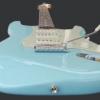I've read at pubmed.org that percutaneous absorption of drugs is as much as 40 times higher with the presence of FDA recognized detergents I have also read that the kind of molecule matters with Na alginate more effective than sodium lauryl sulfate
This reference is pro goo
Boll Chim Farm. 2002 May-Jun;141(3):210-7.Links
Buccoadhesive tablets for insulin delivery: in-vitro and in-vivo studies.Hosny EA, Elkheshen SA, Saleh SI.
Dept. of Pharmaceutics, College of Pharmacy, King Saud University, Riyadh, Saudi Arabia.
In the present work, insulin (6 U/kg) was formulated into bioadhesive buccal tablets using Carbopol 934, Hydroxypropyl cellulose (HPC) or Hydroxypopylmethyl cellulose (HPMC) and different absorption promoters. The effect of different ratios of HPC or HPMC to Carbopol on the rate of water uptake was studied. The axial and radial detachment force as well as the duration of adhesion of tablets to a porcine buccal tissues were also investigated. Furthermore the hypoglycemic effect of some formulations containing HPMC and Carbopol in different ratios with different additives and enhancers was studied using diabetic male beagle dogs. The rate of water uptake of tablets prepared with 3:1, 1:1 or 1:3 of HPC or HPMC: Carbopol was directly proportion to the Carbopol content of the tablet. The incorporation of enhancers (10%) to tablets prepared with HPMC: Carbopol of 1:1 ratio did not affect to a great extent the rate of tablets hydration. On the other hand, coating one side of the tablet with 50 mg of the impermeable cutina led to a significant reduction in the rate of tablets' water uptake reaching 50% to 75% in comparison with the uncoated tablets. Carbopol had the most influential effect on both mucoadhesion force and duration followed by HPMC. Tablets prepared with 100% HPC completely eroded within 6 hours during the measurement of the duration of adhesion. The incorporation of Carbopol with this polymer significantly improved its mucoadhesion duration reaching more than 24 hours with the 1:3 HPC: Carbopol. Ten percent of either sodium salicylate (NaSal) or sodium deoxycholate (NaDC) did not affect the duration of mucoadhesion of tablets prepared with 1:1 HPMC: Carbopol while 10% of Witepsol or Cacao butter and 1% of polyoxyethylene-9-lauryl ether (POELE) significantly reduced it. Tablets made using a polymer mixture of HPMC: Carbopol 934, 1:3 resulted in improved pharmacodynamic parameters producing a relative hypoglycemia (RH) of 6.72%. Furthermore, tablets made using polymer mixture of HPMC: Carbopol 934 in a ratio of 1:1 and containing 1% POELE resulted in 26% reduction in plasma glucose levels and producing 9.42% RH. Inclusion of other promoters such as 10% sodium deoxycholate or 10% sodium salicylate gave rise to RH values of 7.93 and 8.65% respectively.
This reference is pro sodium dodecyl sulfate like detergent
AAPS PharmSciTech. 2009 Mar 12. [Epub ahead of print] Links
Transbuccal Delivery of 5-Fluorouracil: Permeation Enhancement and Pharmacokinetic Study.Dhiman MK, Dhiman A, Sawant KK.
TIFAC Center of Relevance and Excellence in NDDS, Pharmacy Department, The M.S. University of Baroda, G.H. Patel Building, Donor's Plaza, Fatehgunj, Vadodara, 390002, Gujarat, India, dhiman.munish@gmail.com.
The purpose of this study was to determine the effect of permeation enhancers on the transbuccal delivery of 5-fluorouracil (FU). The effect of permeation enhancers on in vitro buccal permeability was assessed using sodium deoxycholate (SDC), sodium dodecyl sulphate (SDS), sodium tauroglycocholate (STGC), and oleic acid and their concentrations for absorption enhancement were optimized. STGC appeared to be most effective for enhancing the buccal permeation of FU than the other enhancers. These enhancements by STGC were statistically significant (p < 0.05) compared to control. The order of permeation enhancement was STGC > SDS > SDC > oleic acid. Histological investigations were performed on buccal mucosa and indicated no major morphological changes. The enhancing effect of STGC on the buccal absorption of FU was evaluated from the mucoadhesive gels in rabbits. The absolute bioavailability of FU from mucoadhesive gels containing STGC increased 1.6-fold as compared to the gels containing no permeation enhancer. The mean residence time and mean absorption time considerably increased following administration of gel containing penetration enhancer compared with the gel without penetration enhancer.
Biol Pharm Bull. 2008 May;31(5):955-62.Links
Delivery of resveratrol, a red wine polyphenol, from solutions and hydrogels via the skin.Hung CF, Lin YK, Huang ZR, Fang JY.
School of Medicine, Fu Jen Catholic University, Taipei County 242, Taiwan.
Resveratrol, the main active polyphenol in red wine, has been demonstrated to show benefits against skin disorders. The bioavailability of orally administered resveratrol is insufficient to permit high enough drug concentrations for systemic therapy. In this study, we examined the feasibility of the topical/transdermal delivery of resveratrol. The effects of vehicles on the in vitro permeation and skin deposition from saturated solutions such as aqueous buffers and soybean oil were investigated. The general trend for the delivery from solutions was: pH 6 buffer=pH 8 buffer>10% glycerol formal in pH 6 buffer>pH 9.9 buffer>pH 10.8 buffer>soybean oil. A linear relationship was established between the permeability coefficient (K(p)) and drug accumulation in the skin reservoir. Viable epidermis/dermis served as the predominant barrier for non-ionic resveratrol permeation. On the other hand, both the stratum corneum (SC) and viable skin acted as barriers to anionic resveratrol. Several prototype hydrogel systems were also studied as resveratrol vehicles. The viscosity but not the polarity of the hydrogels controlled resveratrol permeation/deposition. Piceatannol, a derivative of resveratrol with high pharmacological activity, showed 11.6-fold lower skin permeation compared to resveratrol. The safety profiles of resveratrol suggested that the hydrogel caused no SC disruption or skin erythema. It was concluded that delivery via a skin route may be a potent way to achieve the therapeutic effects of resveratrol. This is the first report to establish the permeation profiles for topically applied resveratrol.
thus whatever the legal oral surfactants plus gels are I strongly urge putting them with any oral absorption longevity product just look up buccal absorption at pubmed
Edited by treonsverdery, 26 March 2009 - 05:55 PM.















































